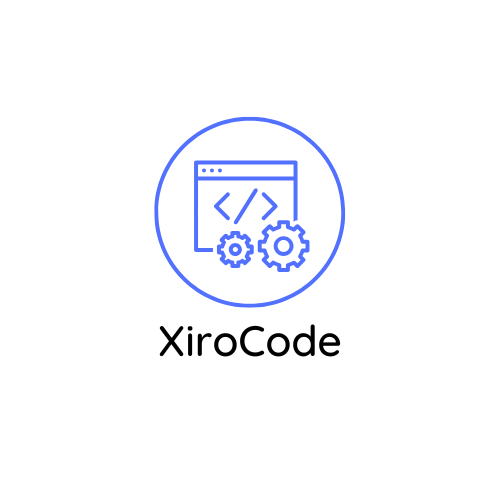In the digital age, custom web applications are the secret sauce for businesses looking to stand out. But what’s the price tag for this magical potion? Spoiler alert: it’s not as simple as picking a number off a menu. Just like choosing between a fancy coffee or a regular brew, the cost of custom web app development can vary widely based on your unique needs.
Custom Web Application Development Cost
Custom web application development costs vary widely based on several key factors specific to each project. This section explores essential considerations that affect overall pricing.
Factors Influencing Development Cost
Development cost stems from various influences. Project complexity represents a significant factor, where intricate applications often demand more time and resources. Developer location also plays a role; for instance, agencies in North America generally charge more than those in Eastern Europe or Asia. Furthermore, technology choices impact cost; advanced tech stacks can incur higher expenses. The integration of third-party services and APIs typically increases development time, which raises costs. Maintenance requirements after launch also necessitate budgeting for ongoing support.
Types of Custom Web Applications
Custom web applications come in different types, each with unique cost implications. Enterprise applications cater to organizations needing robust, scalable solutions, typically associated with higher costs. E-commerce platforms require comprehensive features to support transactions, impacting their overall expenditure. Content management systems enable easy content updates, which can vary significantly in pricing based on functionality. Additionally, mobile applications designed for iOS or Android introduce unique development challenges and expenses. The final choice of application type influences development strategies and budgets significantly.
Breakdown of Costs

Understanding the various components that contribute to the cost of custom web application development is crucial for effective budgeting. This section outlines key factors that determine the overall expenses.
Design and User Experience
User interface design and user experience play significant roles in the total project cost. A well-thought-out design enhances usability and engagement, leading to increased customer satisfaction. Custom designs incur higher fees compared to template-based solutions. Factors like responsive design, branding elements, and interactive features also influence costs. For instance, creating a unique branding identity may add substantial expenses. Prioritizing user-centered design ensures that the application meets specific user needs, impacting development duration and efficiency.
Development and Programming
Development and programming costs represent a substantial portion of the overall budget. Factors such as the complexity of the application and choice of programming languages directly influence these costs. Experienced developers command higher rates, but their expertise can expedite project delivery. Integrating third-party services can also increase expenses through additional coding and testing. When planning budgets, consider various technology stacks and their implications on development time and maintenance. Moreover, full-stack developers may provide broader skill sets, which can result in savings in the long run.
Testing and Quality Assurance
Testing and quality assurance ensure a reliable and functional application, impacting overall development costs. The scope of testing influences expenditures, as comprehensive testing includes functional, performance, and security assessments. Automated testing can reduce long-term costs but incurs initial setup expenses. Manual testing may require more resources and time but enhances user experience by identifying usability issues. Various testing methodologies will determine budget allocations and timelines. Prioritizing quality in this phase helps mitigate future costs associated with bugs and user dissatisfaction.
Budgeting for Custom Web Application Development

Budgeting for custom web application development involves assessing various factors that impact costs. Understanding the project scope serves as the foundation for accurate estimates.
Estimating Project Scope
Estimating project scope significantly affects overall budget. Clearly defined parameters help avoid unexpected expenses. Breaking down tasks such as design, development, and deployment aids in determining timeframes and resources required. Project complexity directly influences cost; simple applications require fewer resources compared to intricate platforms. Engaging with stakeholders ensures alignment on features and objectives. Prioritizing essential functionalities can streamline costs, allowing for adjustments based on resource availability or budget constraints.
Determining Necessary Features
Determining necessary features is crucial in establishing a realistic budget. Essential functionalities define the core of the application and should be identified first. User experience must be a priority; if users find it difficult to navigate, project success diminishes. Features such as account management, payment processing, and reporting should be evaluated based on value to the user. Advanced capabilities, like third-party integration, enhance functionality but also increase costs. Crafting a comprehensive list of must-have features alongside optional ones allows for a balanced approach to budgeting. Prioritizing these elements facilitates strategic planning and investment allocation.
Comparing Costs Across Different Regions

Custom web application development costs vary significantly across different regions. North America tends to have the highest rates, often ranging from $150 to $250 per hour for experienced developers. These rates reflect the high standard of living and demand for skilled talent in the region.
Europe presents a range of pricing options, with costs typically between $100 and $200 per hour. Western European countries like Germany and the UK feature higher rates, while Eastern European nations such as Poland and Ukraine often provide competitive pricing due to lower living costs.
Asia also offers a broad spectrum of rates, with Indian developers charging as little as $25 to $50 per hour. This affordability stems from a large pool of skilled developers and lower operational costs. Southeast Asian countries like Vietnam and the Philippines present rates of $40 to $80 per hour, making them attractive for businesses seeking quality development at reasonable prices.
Considering the impact of cultural and language differences is essential. Communication challenges may arise with teams in diverse regions, potentially influencing project timelines and costs. Selecting the right development partner requires weighing these factors against budget constraints.
Regional economic conditions play a vital role as well. Access to resources, local market demand, and prevailing economic factors contribute to overall project expenses. Understanding these regional dynamics helps businesses make informed decisions regarding custom web application development.
Prioritizing quality while considering cost encourages businesses to balance budgetary constraints with the need for expertise. Ultimately, selecting the right region for development hinges on aligning project goals with available resources and expertise.

